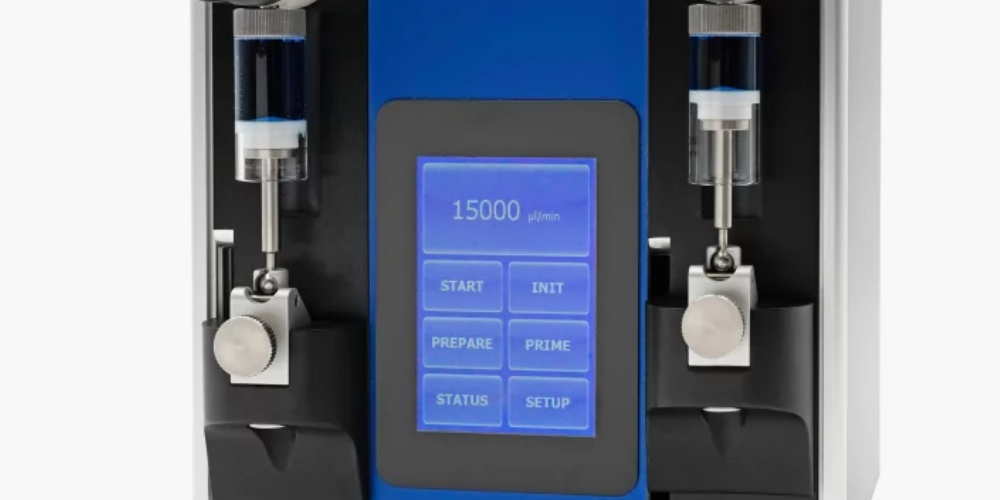
Nowadays most embedded designs on the market, from consumer white goods to industrial machinery, incorporate some form of display. The current sophistication of touch displays, enabling commands to be given through swipes and gestures, owes much to the early smartphone designers. Touch-enabled LCD displays can reduce system cost by removing the need for switches and push buttons. Product reliability can also be improved by using capacitive touch screens to avoid dust and moisture ingress through switch enclosures. Additionally, a well-presented, visually pleasing and intuitive display contributes significantly to the aesthetics of a product, strengthening product brand value and user confidence.
Designers must make a choice when building a display into their embedded systems – design from scratch or use an off-the-shelf module. Whilst both have their merits, and the specifics of some designs may dictate the former approach, display design has become a speciality and there is a comprehensive range of off-the-shelf devices on the market.
We discuss 5 factors to consider when choosing between discrete design or off-the-shelf modules and look at a specific module, the gen4-uLCD-43DCT-CLB from 4D Systems.
The impact on the MCU resources
The choice of MCU is driven primarily by the computing and interfacing needs of the embedded application, and integration of a display into the design can increase the required MCU specification. Additional memory must be allocated for the display frame buffer and the MCU must compose the image to be displayed in the buffer, incorporating images and icons in addition to processing the data to be displayed. Some displays incorporate a video controller which reads the data in the display buffer and writes it to the display itself, whereas others don’t, leading to additional overhead on the MCU. In summary, the MCU must be capable of running the display and frame buffer tasks in addition to managing the core application
On the other hand, separate display controllers have most of the above resources integrated on chip, including frame buffer memory and microcontrollers. They also feature industry standard interfaces, enabling easy interface to the host MCU which can therefore offload the display tasks and dedicate all its resources to the application.
Using a module such as the 4.3-inch gen4-uLCD-43DCT-CLB from 4D Systems (figure 1) in a design can enable a lower specification – and hence lower cost – to be used.

Figure 1: gen4-uLCD-43DCT-CLB from 4D Systems
The length and complexity of the design cycle
Designing discrete display systems very often ends up being more complicated and costly than initially expected, with many unforeseen challenges. Drivers must be written for the display controller, and also primitives have to be developed to allow icons, fonts and stored images to be written to the display. The primitives also need to include basic graphic functions such as drawing lines, circles and boxes, after which a GUI for the application must be implemented. The display hardware needs to be laid out around the main application and everything debugged and tested and a design cycle of between 4 and 6 months isn’t unreasonable.
Display modules, such as the gen4-uLCD-43DCT-CLB, usually come with all of the drivers, primitives and GUI functions already developed and tested. The off-the-shelf approach can therefore significantly reduce the overall design time of the embedded system.
A quality display module will be supported by development tools
Many families of display modules, such as those produced by 4D Systems, are supported by integrated software development environments, (IDE). 4D’s Workshop4 IDE, (figure 2), provides three main ways to support the development of display application code. Professional developers can use the IDE, writing their own code in the 4DGL graphical programming language. The ViSi method enables a drag-and-drop approach together with the ability to add application-specific 4DGL code, whereas the third method – ViSi Genie – offers a completely codeless approach to designing a graphic application interface.
Furthermore, a 4DGL library is provided to simplify communication between the host MCU and the display module, reducing the amount of data needing to be transferred between the two.

Figure2: Workshop 4 IDE from 4D Systems
Product time to market
As discussed above, use of an off-the-shelf module can significantly reduce time-to-market by reducing the 4 to 6-month design cycle often required for discrete implementations. In today’s fast-paced consumer environment, this reduction in time to market may be the difference between product success or failure.
Total product cost
A straightforward consideration of the bill-of-materials for a planned embedded system may lead to the conclusion that a discrete design is more cost effective. However, careful consideration of the total costs of production may well give a different perspective. Designing with an off-the shelf module can enable use of a cheaper, lower-spec MCU as the display-related tasks can be off-loaded. Design and production costs can be significantly reduced, both by avoiding the need to develop dedicated hardware and software to manage the display, and also by taking advantage of the support offered by an IDE.
Finally, reduced time to market means earlier access to revenue and the increased market share that comes with early market entry.
When faced with adding a graphical LCD display to a design, engineers should carefully consider whether a discrete approach can be accommodated within the project timescales and cost budget. Intelligent display modules, together with their graphical design tools, can significantly reduce the length of the design process, enabling working prototypes to be delivered in shorter timeframes.
Adopting a total-cost approach, including the savings from the reduced design time as well as the benefits of faster time to market may fundamentally favour use of off-the-shelf modules over discrete design.
Table of contents
Subscribe to our newsletter
Latest Case Studies

This case study unveils a practical application of embedded innovation, highlighting the process and outcomes of upgrading legacy systems in a technology-focused product line. Through strategic technological integration, the project not only uplifted product performance but also markedly improved customer satisfaction levels. The subsequent pages delve into various strategic and operational enhancements made, providing readers with a nuanced understanding of the concrete impacts and subtleties involved in a real-world, engineer-led embedded innovation initiative. A testament to blending traditional systems with modern innovation.

Duratec, specializing in liquid handling devices for various industries, aimed to simplify the control interfaces of their new product line. Partnering with 4D Systems, they integrated a touch display module enhancing user-centricity and operational efficiency. This transition replaced outdated control panels with an intuitive, modern interface without compromising on control capabilities via the RS232 interface. Three new devices were launched, improving user interactions through user-friendly touch displays, showcasing Duratec's commitment to innovation. This collaboration allowed for more straightforward control, monitoring, and interaction with Duratec's devices, ensuring a better user experience and meeting industry demands.

In the challenging process of creating an advanced 3D printer, BCN3D encountered an unexpected difficulty: finding an appropriate, user-friendly display module. Despite initial struggles, BCN3D discovered the solution in 4D Systems’ gen4 display modules. These modules offered superior resolution, processing power, and flexibility. Key to BCN3D's decision was the modules' easy integration via a serial connection and the Arduino-compatible library into their firmware. For its Sigma R17 3D printer, BCN3D upgraded to the gen4-ULCD-35DCT-CLB, a 3.5-inch Intelligent TFT-LCD display module with capacitive touch, further enhancing the user experience. The gen4 series of intelligent display modules perfectly matched BCN3D's requirements, offering innovative solutions in the sophisticated 3D printing space.

